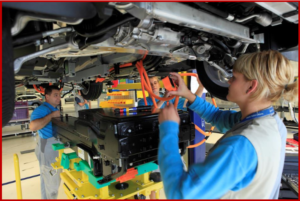
The road to fully autonomous vehicles is long, but milestones will be model year by model year with new technologies unthinkable a decade ago.
BMW Group and Mobileye signed an agreement introducing Mobileye’s Road Experience Management data generation technology in newly developed BMWs in 2018 to create digital maps. This agreement to “crowd-source real-time data” using vehicles equipped with camera-based Advanced Driver Assist System (ADAS) technology is needed for autonomous driving through next-gen high-definition (HD) maps aimed at making driving safer and more efficient for consumers.
An emerging, show-stopping problem with autonomous vehicles comes from the state of the roads and existing GPS maps. Roads are inconsistently marked, in various states of disrepair and subject to camera and sensor fouling weather conditions. GPS maps aren’t accurate enough. Autonomous vehicles will require HD maps that can identify and update changes in the environment with near real-time speed, enabling very short “time to reflect reality.”
The BMW Group says it is interested in collaboration with additional partners, be it OEMs or other third parties just another example of proliferating technology adaptations in transportation, and a tacit acknowledgement of the ruinous development costs entailed. Autonomous cars are the stuff of science fiction with at the moment the costs of running NASA and other space programs.
BMW Group says its sensor data can be merged with data from different automakers, resulting in a larger scale of data used to create Mobileye’s Global RoadBook to “support and rapidly update HD maps with highly accurate localization capabilities.”
The cameras that collect” “anonymized,” fleet-wide data – yes, the raw data has Big Brother watching your driving – act as intelligent observers that, through Mobileye EyeQ processors and software, are said to be able to identify information that is sent to the cloud in a compressed form (10 kilobytes per kilometer). This data can be used to add a dynamic layer to current and future navigation maps, enabling customers to access accurate real-time information on traffic density, potential road hazards, weather conditions, on-street parking, and other helpful information.
The BMW Group and Mobileye will transfer “anonymized data” to HERE, a mapping and location service. HERE will use this data to conduct real-time updates of HERE HD Live Map, a real-time cloud service for partially, highly and fully autonomous vehicles, and enhance its Open Location Platform, ensuring – at least in Geek theory – an accurate depiction of the real world as it changes. Mobileye and HERE earlier communicated their intention to integrate data gathered through REM, for Road Experience Management, technology as a layer in HERE HD Live Map.
The BMW Group collaboration on autonomous driving with HERE, as well as the cooperation with Intel and Mobileye are intended on bringing highly automated driving to the streets by 2021 with the BMW iNEXT. Group “leading capabilities in end-to-end system integration which are essential to implement groundbreaking technologies like autonomous driving and transfer them into series production.”

